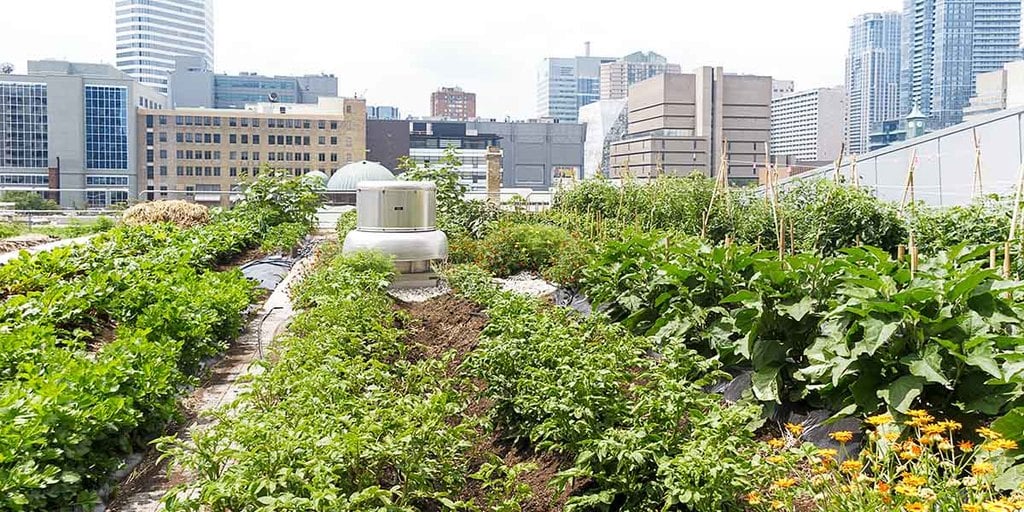How City Blooming can Save You Time, Stress, and Money.
How City Blooming can Save You Time, Stress, and Money.
Blog Article
The Main Principles Of City Blooming
Table of ContentsIndicators on City Blooming You Should KnowNot known Facts About City BloomingThe Definitive Guide to City BloomingThe 6-Minute Rule for City BloomingNot known Incorrect Statements About City Blooming
Fascinated in growing food for sale in the City of Chicago? Below is a checklist of regularly asked concerns relating to the regulations and regulations that cultivators ought to consider when preparing a city agriculture job.
The zoning amendment does not change any kind of various other codes managing composting, structure licenses, acquiring or renting City had property, service licenses or environmental contamination. There are existing codes that manage these concerns and they remain completely effect and may be applicable to your job. Area yards are usually had or taken care of by public entities, public companies or community-based companies and preserved by volunteers.
Urban ranches expand food that is intended to be sold, either on a nonprofit or for-profit basis. Due to their industrial function, urban ranches call for a company license.
Our City Blooming PDFs
Composting is allowed but just for plant product that is produced and used on website. The amount of garden compost material can not exceed 25 cubic lawns at any provided time according to the requirements in 7-28-715 of the City's Municipal Code. Yes. Since the dirt at many new yard websites requires amending, garden compost, dirt, timber chips, or various other materials can be acquired to build or enhance the expanding space - sustainability.

If a building authorization is needed then the hoophouse will certainly be thought about an accessory structure. You can discover even more concerning the building authorization demands by speaking to the Division of Buildings. The 25,000-square-foot dimension limitation is meant to prevent a solitary community yard from dominating a given block or diminishing the block's existing domestic or industrial character.
The limitation does not apply to yards found in Public Open Area (POS) districts. Can there be even more than one community garden that is 25,000 square feet on a single block? Fencing is not required, nonetheless, yards that have big car park areas may be called for to set up fencing or other landscaping attributes.
Some Ideas on City Blooming You Should Know
B1 & B2 areas require that all industrial use activities be conducted inside your home. R areas restrict industrial activity. The regulations reflect the objective and intent of the Zoning Code. Is secure fencing required for metropolitan farms? Yes. Fencings may be needed, along with landscaping and screening, for sure auto parking areas and exterior work or storage locations depending upon area and the certain activity occurring.
Yes. Urban farms call for structure licenses and zoning approvals prior to construction. Various other kinds of city review may be required depending on specific structures, tasks, dimension, landscape design, licensing, public heath and stormwater monitoring problems. A number of these requirements are identified in the project design or allowing procedure, however, the applicant might be liable to individually determine particular licenses or permits that might be called for.
Yes. The kind of license is figured out by what is happening at the website. The Division of Organization Affairs and Consumer Defense can assist establish the particular type of business certificate that's needed. Yes. Off street parking is required for many industrial jobs in Chicago. The needed variety of car park rooms is based on the variety of staff members working with website and not the square video of the growing area.
Our City Blooming Ideas

A city ranch can offer garden compost product created useful site on website, nonetheless, the operation has to comply with the policies in 7-28-715 of the Chicago Municipal Code. Aquaponic systems are allowed indoors on urban ranches in several zoning areas.
As much as five hives or colonies of honey bees might be kept as an accessory use. Beekeepers must sign up with the Illinois Department of Agriculture. To find out more regarding the recommended zoning change you may get in touch with the Division of Housing and Economic Development, Bureau of Preparation and Zoning at 312.744.8563.
Farming in cities and metropolitan areas An urban ranch in Chicago. Urban farming refers to different techniques of growing. https://city-blooming.webflow.io/, processing, and distributing food in city locations. The term likewise applies to the area activities of pet husbandry, tank farming, beekeeping, and gardening in a city context. Urban farming is identified from peri-urban farming, which occurs in backwoods beside residential areas.
All About City Blooming
It can entail an activity of natural cultivators, "foodies" and "locavores", who seek to develop social media networks based on a common principles of nature and neighborhood holism. These networks can create using official institutional support, becoming incorporated into neighborhood community planning as a "shift town" activity for lasting urban advancement.
The a lot more straight access to fresh vegetable, fruit, and meat items that may be understood through metropolitan farming can boost food safety and food safety and security while lowering food miles, causing reduced greenhouse gas discharges, thus adding to environment modification mitigation. Some of the very first evidence of urban agriculture comes from Mesopotamia.
Report this page